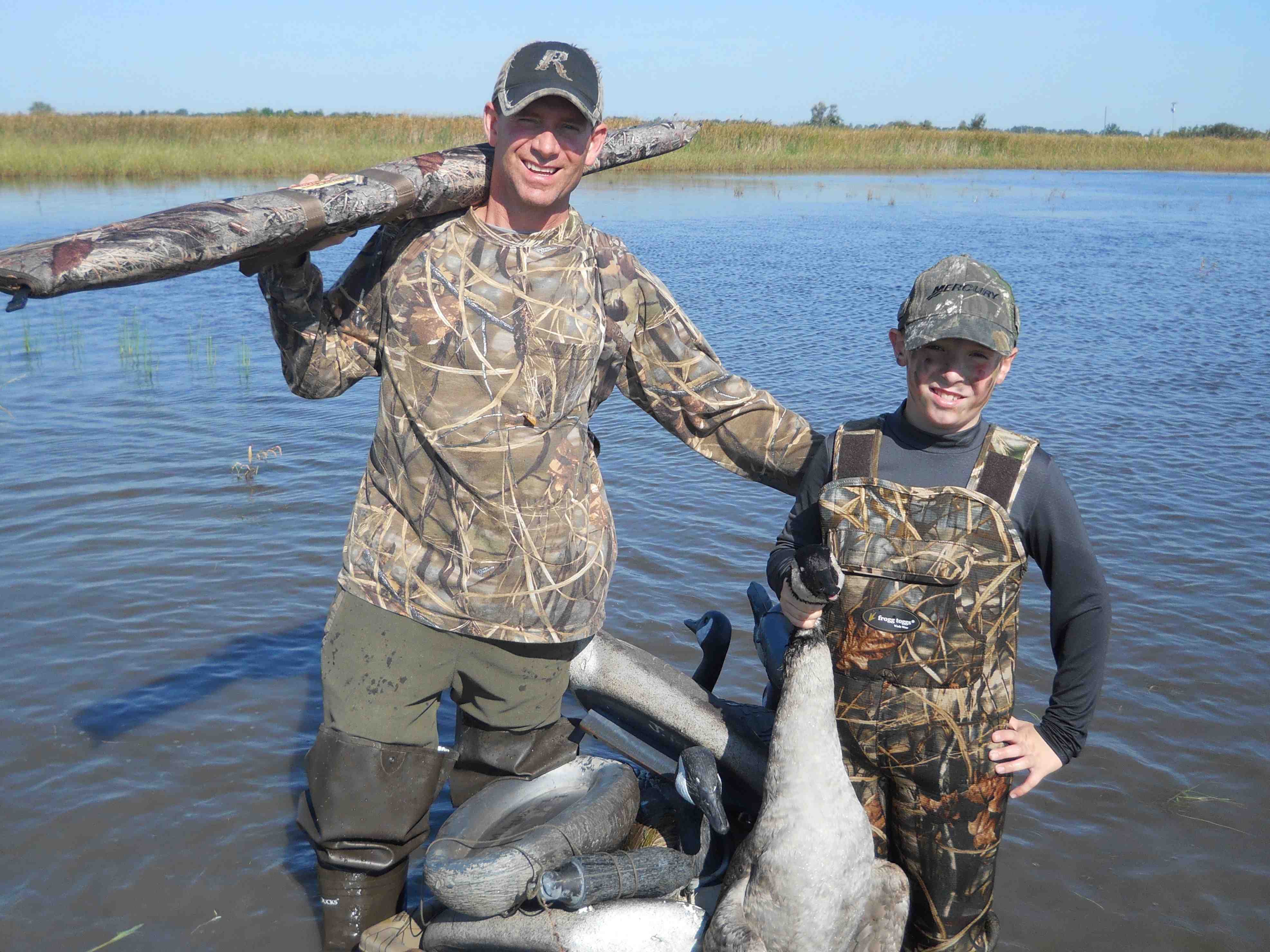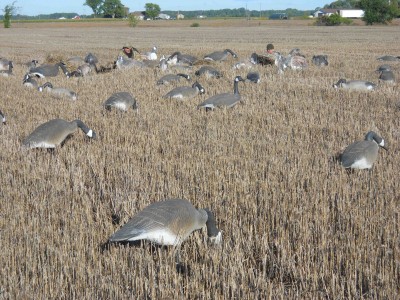Strategies for Success in Michigan’s Early Goose Season
Dave Mull 08.28.13

Professional waterfowl guide Jeff Godi of Linwood, Michigan says a big key to bagging giant Canada geese when the season starts September 1 is to treat ’em like turkeys.
“I liken it to turkey hunting,” says Godi, who runs the Michigan Experience, a guide service that also puts anglers on Saginaw Bay walleyes. “You kind of roost your birds the night before—see what fields they’re hitting—and that’s where you want to set up before daylight the next morning. If they’re there the night before, that’s where you’re going to find them the following day.”
Godi doesn’t take clients after geese in the early season, reserving hunts for family and friends until the waterfowl seasons start in earnest on Saginaw Bay. But the duck and goose expert takes the pursuit of geese just as seriously as if he had paying clients. He offers some insights that ought to give goose hunters of all experience levels their best chances for early-season success.
He pays meticulous attention to decoys, both numbers and how he sets the spread.
“I try to mimic what I saw the night before,” says Godi, who says wheat field stubble fields are the best attractors for flocks of resident Canadas. “If there were a lot of birds, I set out a lot of decoys—up to 80. If I’ve seen small family groups, then I set out fewer.”
How he sets the family group decoys matters, too. He places about three dozen full-bodied and shell decoys in groups of five to seven, with space in between to give incoming geese places to land. The most realistic, full-bodied decoys with flocked heads go on the downwind end of the spread nearest to the shooters, which is the end most flying geese will approach when they decide to come in for a landing. Silhouettes and shell decoys are placed on the upwind end, and also used right around the layout blinds to mask the hunters’ presence. Godi says the better hidden that hunters are, the better shooting they’ll have.
“In the fields, being hidden is the key,” says Godi. “Layout blinds are the rage, but hiding those layout blinds is really important. Just relying on the camouflage material isn’t enough. You have to add whatever cover is available to the blind.”
That means hacking weeds and collecting wheat stalks and covering the layout blinds.

On the subject of calling, Godi says less is usually, but not always, better.
“If the birds are vocal, I try to be vocal, too, but if they’re being quiet, I keep calling to a minimum. I think a lot of people tend to over-call. If the birds are just giving a couple of honks, I’ll try to do the same thing.”
On the subject of goose loads, he said he shoots mostly three-inch magnum loads with steel BB shot, but often has a 3-1/2-inch shell for the third shot that often comes when the geese are already beating a hasty retreat.
“Early season, the birds haven’t built up big fat reserves yet,” he notes. “And most of your shots will be closer than 35 yards.”
He points out that since the vast majority of early goose hunting takes place on private land, it’s important to get permission from the landowner. And when he knocks on doors to gain access, he always tries to look presentable with nice clean clothes—another one of the little things that helps increase chances for success.
“First impressions count when you get to that farmhouse,” he says. “I’m sure these guys get asked for hunting privileges by a lot of people. You’re asking for permission and he’s making a quick decision on if he wants this guy on his property or not. It makes sense to be polite and have a half-way decent appearance.”
Godi prefers hunting in fields and cautions against gunning geese at their on-water roosting areas where they spend nights.
“You have to be careful not to blow the geese completely out of the area,” he says. He adds, however, that setting decoys on the water in non-roosting areas and calling geese into the spread can be effective.
“When water hunting, I put all the floaters I can,” he says. “It’s very cumbersome. For most guys, two dozen is a big spread, but I try to load it up more—I have 50 floaters. I take shell decoys and zip-tie gray pipe insulation underneath, which works great for keeping them floating on calmer days.”
Good areas to try hunting water include the edges of marshes and from points of land on bigger water. Blinds aren’t necessary if you can hide in the existing vegetation, he adds.
“I try to blend into the grass and cattails.”
Godi notes that the early goose season can create some great memories.
“It’s a good way to get kids fired up on the sport,” he says, noting he often takes his daughter along. “To me there’s not a lot of things more exciting than those big geese coming in, wings cupped and honking. As far as the anticipation factor, it’s one of the neatest things I do. And there’s nothing more sociable than waterfowling. You’re spending time talking and drinking coffee, then the birds come in and you hunker down. That’s why I can do this year after year. It just doesn’t get old.”
Waterfowl hunting in Michigan starts with the early Canada goose season September 1 statewide. The daily bag limit is five. For a list of Michigan waterfowl seasons, click here.
For more information on Michigan hunting go to michigan.org. Click here to purchase a Michigan hunting license online.

